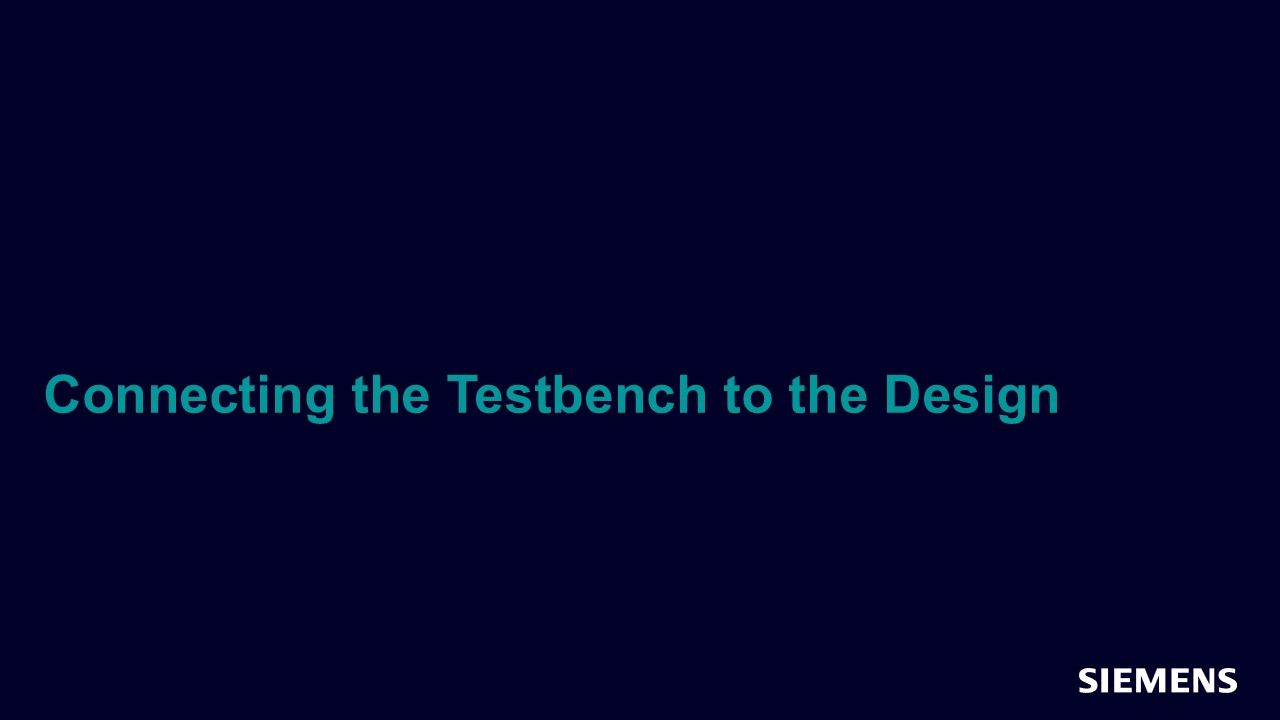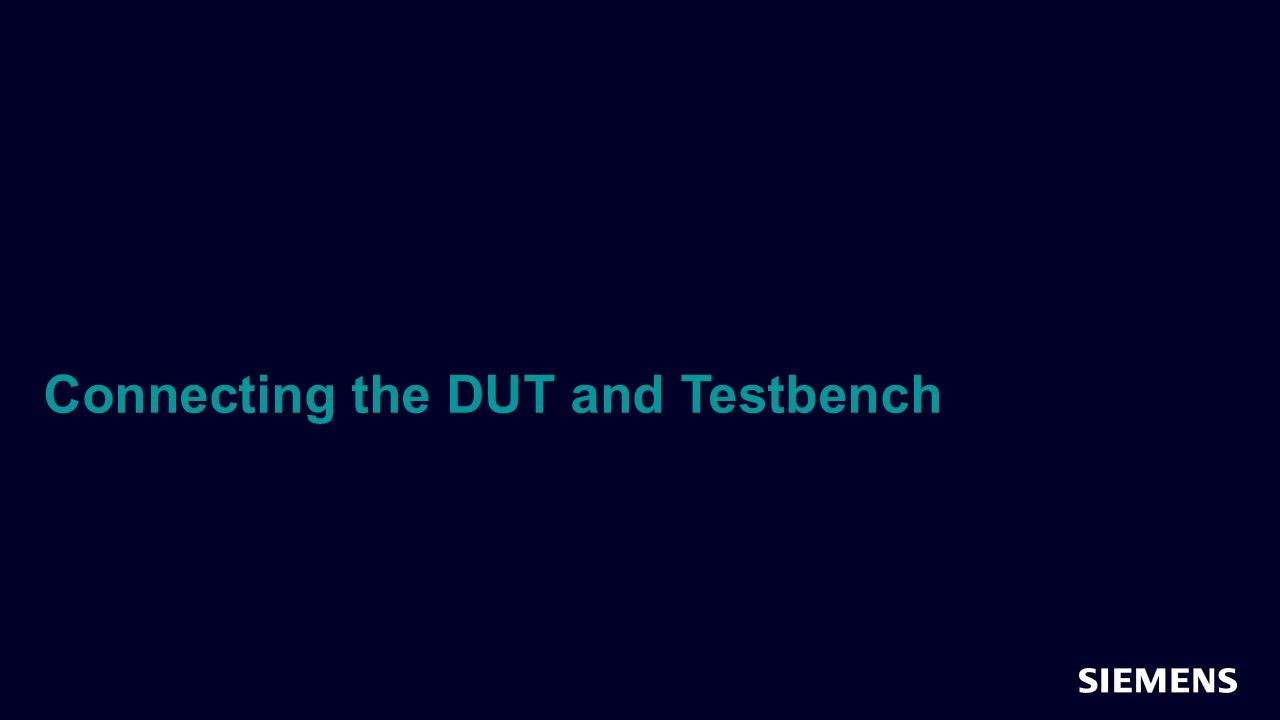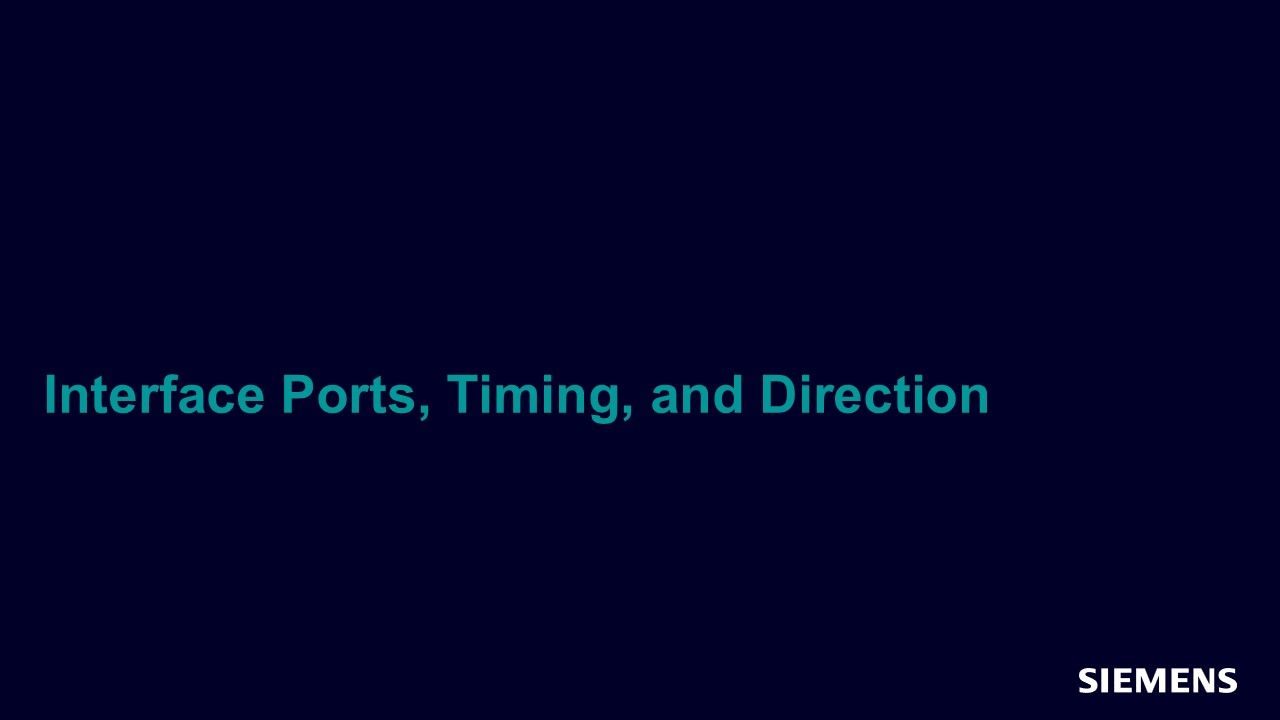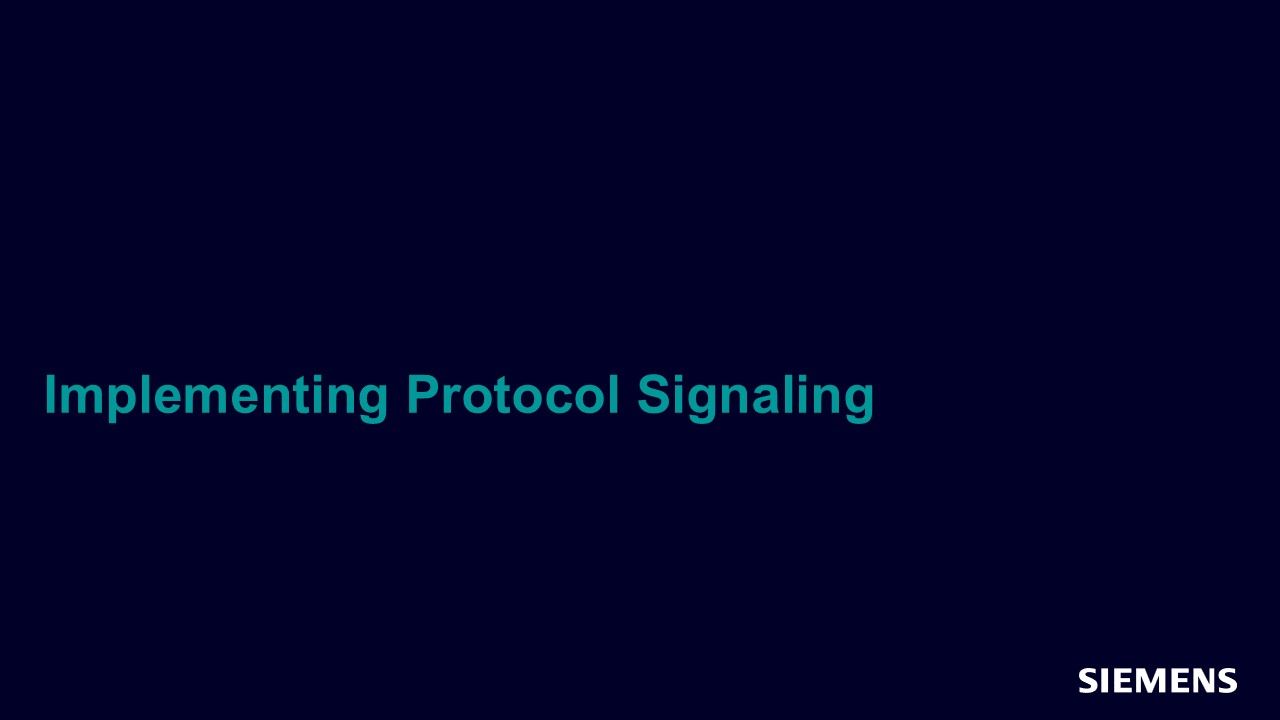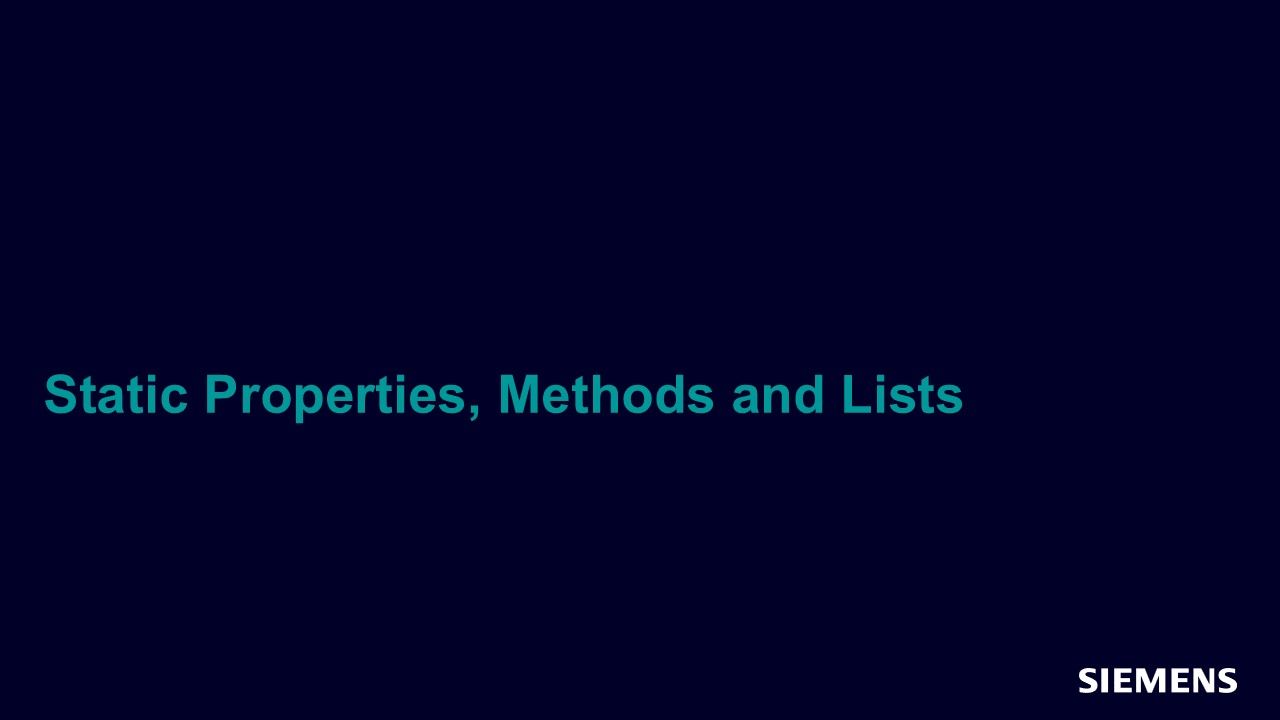UVM (552)
SystemVerilog (405)
Testbench (310)
Formal Verification (288)
Verification Horizons (275)
Debug (146)
Standards (145)
Verification IP (134)
Coverage (126)
DVCon (124)
Aerospace (110)
Mil/Aero (110)
Sequences (110)
Protocol (109)
RTL (100)
Functional Safety (93)
Low Power (91)
UVMF (91)
UPF (89)
UVM Framework (89)
Verification Management (87)
Simulation (85)
Clock-Domain Crossing (83)
Assertions (82)
CDC (81)
Functional Verification (77)
AI/ML (74)
FPGA (74)
Stimulus (73)
Transactions (71)
Verification Planning (70)
ISO 26262 (69)
Power Aware (68)
Components (66)
FPGA Verification (65)
QDS (63)
DUT-TB (61)
Automotive (60)
Analysis (59)
Metrics (58)
SystemC (58)
Emulation (56)
Constraints (55)
Methodology (54)
Registers (54)
Coverage Closure (53)
Code Example (52)
Functional Coverage (52)
HW/SW Verification (52)
Property Checking (52)
Machine Learning (51)
Tests (51)
Industry Trends (49)
Wilson Research Group (49)
RDC (48)
Integrated Environment (47)
Reuse (47)
Safety Critical (47)
FPGA Designs (46)
UVM Connect (46)
Verification Trends (46)
Interfaces (45)
Generative AI (44)
Portable Test & Stimulus (44)
Regression (44)
UVMC (44)
Verification Process (44)
SoC (43)
Formal Apps (42)
Verification Environment (42)
Trends (39)
VHDL (39)
Emerging Trends (38)
OOP (38)
Formal Coverage (37)
PSS (36)
RISC-V (36)
Security Verification (36)
Avery Verification IP (35)
DAC (35)
TLM 2.0 (35)
Equivalence Checking (34)
IC/ASIC (34)
Power Management (34)
Questa One (34)
AMS (33)
Factory (33)
IEEE 1801 (33)
Verification Productivity (33)
WRG (33)
Code Coverage (32)
Compliance (32)
Configuration (32)
Objects (32)
Scoreboard (32)
Connectivity (31)
DO-254 (31)
Artificial Intelligence (30)
Bug Hunting (30)
Modeling (30)
TLM (30)
osmosis 2022 (30)
Accellera (29)
CDC Methodology (29)
Power Domain (29)
Properties (29)
Register Model (29)
Safety Analysis (29)
Safety Architecture (28)
UVM Debug (28)
ASIC (27)
Analytics (27)
Classes (27)
Introduction to UVM (27)
Lint (27)
Patterns (27)
Requirements Traceability (27)
Verification Efficiency (27)
Functional Simulation (26)
Metastability (26)
PCIe (26)
Property Checks (26)
Test Planning (26)
Verilog (26)
Waveform (26)
Archive (25)
Design Optimization (25)
Reset Issues (25)
Reset-Domain Crossing (25)
Block Level (24)
Design Trends (24)
Driver (24)
Fault Campaign (24)
Formal Analysis (24)
Object Oriented Programming (24)
UVM Basics (24)
Co-Emulation (23)
Cookbook (23)
Requirements (23)
Synchronization (23)
Testplan (23)
osmosis 2024 (23)
Assurance (22)
Data-driven Verification (22)
Lifecycle (22)
Non-Trivial Bug Escapes (22)
Big Data (21)
Collaborative Analysis (21)
Constrained Random Verification (21)
Coverage Metrics (21)
Covergroup (21)
FSM (21)
Memory (21)
PCI Express (21)
Performance (21)
U2U (21)
osmosis 2023 (21)
Acceleration (20)
Advanced UVM (20)
C (20)
Coverage Analysis (20)
Design Constructs (20)
Functional Verification Study (20)
Hardware Fault (20)
VRM (20)
X-Tracing (20)
Abstraction (19)
Config_db (19)
Interactive Mode (19)
Netlist (19)
Packages (19)
Proofs (19)
Python (19)
Safety Mechanism (19)
Safety Workflow (19)
Virtual Interface (19)
API (18)
Asynchronous Clock (18)
Automation (18)
Code Generator (18)
Constrained Random Stimulus (18)
Controllers (18)
Coverage Points (18)
DFT (18)
Data Types (18)
Polymorphism (18)
Requirements Management (18)
Sequence Item (18)
Sequencer (18)
System Level (18)
Verification Practice (18)
Advanced Debug Techniques (17)
Design for Test (17)
Electronic Systems (17)
Fault Injection (17)
Livesim (17)
Object-Oriented Programming in SystemVerilog (17)
Power States (17)
Scenario Generation (17)
Sequence Driver (17)
State Space (17)
Testbench Automation (17)
U2U Europe (17)
Verification Run Manager (17)
Virtual Sequences (17)
Arrays (16)
BFMs (16)
Configuration Database (16)
Continuous Integration (16)
Gate-Level (16)
Interoperability (16)
Signal (16)
CDC Analysis (15)
Inconclusives (15)
Intelligent Automation (15)
QVIP Configurator (15)
Reset-Domain Checking (15)
Universal Chiplet Interconnect Express (15)
Variable (15)
ABV (14)
Assertion-Based Verification (14)
Automotive Functional Safety Forum (14)
COCOTB (14)
Chiplets (14)
Customization (14)
Expressions (14)
Failure Analysis (14)
Fault Simulation (14)
Glitches (14)
HLS (14)
Jenkins (14)
Macros (14)
March 2016 - Volume 12 Issue 1 (14)
Monitors (14)
Productivity Gap (14)
Register Layer Adapter (14)
SLEC (14)
Stimulus Generation (14)
UCIe (14)
UVMC Kit (14)
Verification Closure (14)
AXI (13)
Continuous Integration System (13)
DFT Verification (13)
Design Complexity (13)
FPGA Prototyping (13)
Formal Application (13)
Gate-Level Simulation (13)
Power Intent (13)
Python for Verification Series (13)
Sub-system (13)
X-Propagation (13)
ASIL (12)
Adoption Trends (12)
Agent (12)
Coverage Models (12)
DVCon Japan (12)
Data Mining (12)
Data Models (12)
Declaration (12)
Environment Pattern (12)
Hardware Acceleration (12)
Hierarchical Components (12)
Interrupts (12)
Multi-Die (12)
NVMe (12)
Parameterized Classes (12)
September 2021 - Volume 17 Issue 2 (12)
Unit Testing (12)
Verification IQ (12)
Aerospace and Defense Verification Tech Day (11)
Analog (11)
Connections (11)
Creating and Using Constrained Random (11)
DPI-C (11)
Generation (11)
Interview (11)
June 2015 - Volume 11 Issue 2 (11)
June 2017 - Volume 13 Issue 2 (11)
Memory Models (11)
Methods (11)
Mixed-Signal Verification (11)
OVM (11)
Operators (11)
PYUVM (11)
Processor Design Verification (11)
RDC Design (11)
Reachability Checks (11)
Register Package (11)
Test Environment (11)
Tool Assessment (11)
VIQ (11)
Verification Process Overview (11)
AMBA (10)
Backdoor Accesses (10)
Checkers (10)
Class Handles (10)
Class Reference (10)
Co-Simulation (10)
Command API (10)
Deadlock (10)
Fault Analysis (10)
Fault Grading (10)
High Speed (10)
IC Reliability (10)
Inheritance (10)
Interconnect (10)
July 2022 - Volume 18 Issue 2 (10)
June 2013 - Volume 9 Issue 2 (10)
Matlab (10)
Model Checking (10)
Parallel Simulation (10)
Predictive Analysis (10)
Proof Coverage (10)
Property Debug (10)
Report (10)
Reset Architecture (10)
Root of Trust (10)
Safety Metrics (10)
Timing (10)
Traceability (10)
Unified Power Format (10)
Verification Component (10)
osmosis 2025 (10)
3DIC (9)
Bitstream (9)
Breakpoint (9)
CDC Path (9)
CDC Protocol (9)
Class Objects (9)
Configuration Object (9)
Creating and Using Functional Coverage (9)
Curriculum (9)
Data Management (9)
Data Types and Procedural Statements (9)
Encapsulation (9)
Formal Assertion-Based Verification (9)
Hierarchical Sequences (9)
Iterations (9)
June 2012 - Volume 8 Issue 2 (9)
June 2014 - Volume 10 Issue 2 (9)
June 2018 - Volume 14 Issue 2 (9)
Learning Paths (9)
Monitor (9)
Multi-Core Architectures (9)
Parameter (9)
Randomization (9)
Reference Model (9)
Retention (9)
SPI (9)
Sequence-Driver Use Models (9)
Siemens Xcelerator Academy (9)
Skill Building (9)
Training (9)
UVM Stimulus, Tests, and Regressions (9)
VHDL-2008 (9)
Whats New in Functional Verification (9)
1800.2 (8)
Algorithms (8)
B/C/R Script (8)
Clock Gating (8)
Convergence (8)
Coverage Goals (8)
Cross Coverage (8)
DMA Engine (8)
Design and Verification IP Forum (8)
Directed Test (8)
Ethernet (8)
Factory Pattern (8)
February 2013 - Volume 9 Issue 1 (8)
HDL Domain (8)
HTML Docs (8)
Hardware Security (8)
Isolation (8)
June 2016 - Volume 12 Issue 2 (8)
March 2021 - Volume 17 Issue 1 (8)
Messaging (8)
Metrics-Driven (8)
Mixed-Signal Design (8)
OSCI (8)
OVM2UVM (8)
Occurrence Property Pattern (8)
Overrides (8)
Pipelined (8)
Procedural Statements (8)
Release (8)
Reporting (8)
Safety (8)
Scalable Verification (8)
Simulation Coverage (8)
State Machine (8)
State Transitions (8)
Supply Set (8)
UALink (8)
UCIe 2.0 (8)
UVM Verification (8)
Verification Architecture (8)
osmosis 2023 A&D (8)
ADAS (7)
AI Algorithms (7)
Bind (7)
Cache Coherency (7)
Clocking Verification Challenges (7)
Conditionals (7)
Connecting the Testbench to the Design (7)
Conversion (7)
DAC 2019 (7)
Design Assurance (7)
Design IP (7)
Design Integrity (7)
Diagnostic Coverage (7)
Error Injection (7)
Error Traces (7)
Execution Semantics and Synchronization (7)
HPC (7)
High-Level Synthesis (7)
IP Blocks (7)
IP Security (7)
ISA (7)
Implementation Model (7)
Israel Static & Formal Tech Day (7)
July 2020 - Volume 16 Issue 2 (7)
LLMs (7)
Layering (7)
March 2015 - Volume 11 Issue 1 (7)
March 2022 - Volume 18 Issue 1 (7)
March 2023 - Volume 19 Issue 1 (7)
Metastable (7)
Migration (7)
Modules (7)
November 2014 - Volume 10 Issue 3 (7)
November 2015 - Volume 11 Issue 3 (7)
Order Property Pattern (7)
Parameterized Tests (7)
Pin Level (7)
Postsim (7)
Power Analysis (7)
Power Estimation (7)
Power Logic (7)
Power Optimization (7)
Predictors (7)
RDC Analysis (7)
RDC Violations (7)
Reconvergence (7)
Safety Verification (7)
Schematic (7)
Schematic Debug (7)
Sequential Analysis (7)
Siemens EDA (7)
Specification (7)
Static Checks (7)
Strategy (7)
Structural Analysis (7)
System Scaling (7)
TLM FIFOS (7)
Technology Scaling (7)
Test Generation (7)
Test Verification (7)
Testbench Architecture (7)
Testbench Customization in UVM (7)
Testing Strategies (7)
Tool Qualification (7)
Transaction Recording (7)
UCDB (7)
VA Live 2023 - Huntsville (7)
Waivers (7)
X-Checking (7)
X-Corruption (7)
osmosis Europe 2025 (7)
AEH (6)
Address Mapping (6)
Appendix (6)
Artificial Neural Network (6)
Behavioral Modeling (6)
Coverage Intent (6)
Creating and Using a Test Plan (6)
DDR (6)
Data Transfer (6)
December 2017 - Volume 13 Issue 3 (6)
December 2022 - Volume 18 Issue 3 (6)
Design Mitigation (6)
Design Patterns (6)
Digital Design (6)
Distributed Resource Management (6)
Electronic Hardware (6)
Fabric (6)
Front and Back Door (6)
HDM (6)
Hierarchical Flow (6)
High-Speed (6)
IP Integration (6)
June 2019 - Volume 15 Issue 2 (6)
MARLUG 2023 (6)
MBIST (6)
MIPI (6)
March 2014 - Volume 10 Issue 1 (6)
March 2017 - Volume 13 Issue 1 (6)
March 2020 - Volume 16 Issue 1 (6)
March 2024 - Volume 20 Issue 1 (6)
Metric Validation (6)
November 2016 - Volume 12 Issue 3 (6)
November 2020 - Volume 16 Issue 3 (6)
October 2012 - Volume 8 Issue 3 (6)
October 2013 - Volume 9 Issue 3 (6)
Open Source (6)
PSL (6)
Phasing (6)
Power Efficiency (6)
Pre-Silicon (6)
RDC Methodology (6)
Random Faults (6)
Secure Data Path (6)
Slave (6)
UVM Forum (6)
VA Live 2024 - El Segundo (6)
VA Live 2024 - San Diego (6)
VA Live 2025 - El Segundo (6)
VA Live 2025 - Hudson (6)
VA Live 2025 - Huntsville (6)
Validation (6)
Verbosity (6)
Verification Effectiveness (6)
Voltage Domain Crossing (6)
Windows (6)
X-Effects (6)
YAML (6)
osmosis 2024 A&D (6)
ATPG (5)
Advance Your Verification Methodology (5)
Analysis Pattern (5)
BIST (5)
Base Class (5)
Bus Functional Models (5)
Bus Protocol (5)
Class Library (5)
Class Types (5)
Concurrent Processes (5)
Constraint Solver (5)
Converters (5)
Coverage Holes (5)
DAC 2018 (5)
DAC 2024 (5)
DSP (5)
December 2019 - Volume 15 Issue 3 (5)
Defect Coverage (5)
Design Scaling (5)
Dual Domains (5)
Error (5)
FMEDA (5)
February 2019 - Volume 15 Issue 1 (5)
Flip-Flop (5)
Fork-Join (5)
Formal Testbench (5)
Functional Correctness (5)
Guidelines (5)
HBM4 (5)
Hierarchical Data Model (5)
In-Circuit Emulation (5)
JEDEC (5)
Low Power Verification Forum (5)
MARLUG 2024 (5)
March 2018 - Volume 14 Issue 1 (5)
Non-Determinism (5)
Objections (5)
Precedence (5)
Processor Core Verification (5)
Prototyping (5)
Quirky (5)
SVA (5)
SVUnit (5)
Sequence Library (5)
Simulink (5)
Spice (5)
Split Transactor (5)
State-Based Model (5)
Stimulus Pattern (5)
Sub-system Level (5)
Test Class (5)
Threads (5)
Transaction-Based Acceleration (5)
Transaction-Level (5)
UCIe 3.0 (5)
Utilization (5)
VA Live 2019 - Westford (5)
VA Live 2023 - Westford (5)
VA Live 2024 - Huntsville (5)
VA Live 2024 - Westford (5)
VA Live 2025 - Silicon Valley (5)
VHDL Testbench (5)
Verbose (5)
Verification Complete (5)
Virtual Methods (5)
Wishbone (5)
XML (5)
5G (4)
AI Model (4)
Batch and Debug (4)
Bi-Directional (4)
Bins (4)
Bit Width (4)
Black Boxing (4)
Bug Detection (4)
CHERI (4)
CXL (4)
Co-Verification (4)
Computational Storage (4)
Corner-case Bugs (4)
Coverage Achievement (4)
Data Encryption (4)
Data Link (4)
Deprecated (4)
Design Analysis (4)
DisplayPort (4)
Driver Tracing (4)
ECO (4)
ED-80 (4)
Enumeration (4)
Fault List (4)
Formal Closure (4)
Formal Methods (4)
HBM (4)
HDMI (4)
Hardware-Assisted Verification (4)
ICE Mode (4)
IEEE (4)
Implementation Pattern (4)
LFM (4)
Large Language Models (4)
MARLUG 2025 (4)
Mathworks (4)
Mitigation Architecture (4)
Non-Pipelined (4)
November 2018 - Volume 14 Issue 3 (4)
PCIe Gen 6 (4)
Phases (4)
Plusargs (4)
Protocol Checkers (4)
QoR (4)
Race Conditions (4)
Register-Level Scoreboards (4)
Reset Handling (4)
Reset Tree (4)
Respins (4)
SVTB (4)
Specification Pattern (4)
Static & Formal Adoption (4)
Static Analyses (4)
Subscriber (4)
Subsystem (4)
Synergistic Verification (4)
Tessent Test Solutions (4)
Test Ranking (4)
Time Cone (4)
UART (4)
UEC (4)
UPF 4.0 (4)
USB (4)
Unified Coverage Database (4)
Use Models (4)
VA Live 2023 - Austin (4)
VA Live 2024 - Austin (4)
VA Live 2024 - Fremont (4)
Verification Success (4)
X-Aware (4)
$display (3)
1.2 (3)
AHB (3)
Affect Probability (3)
Agile Development (3)
Airborne Electronic Hardware (3)
Analysis Components (3)
Analysis Port (3)
Application Lifecycle Management (3)
Arbitration (3)
BISR (3)
Base Test (3)
Bidirectional Protocols (3)
Boolean (3)
Built-In Self-Test (3)
CDC Signals (3)
CSI-2 (3)
Callbacks (3)
Case Statements (3)
Cause-Effect (3)
Certification (3)
Class Variables (3)
Classifications (3)
Clock Propagation (3)
Clocking (3)
Code Quality (3)
Control Logic (3)
Coroutines (3)
Cover Method (3)
Coverage Exclusion (3)
Cryptography (3)
Data Processing (3)
Debug Methodology (3)
Delay Loops (3)
Design Constraints (3)
Design Cycle (3)
Design Flow (3)
Design Specification (3)
Design for Safety (3)
Development Environment (3)
Dual Top (3)
ESL (3)
Emulatability (3)
FPU (3)
Fault Detection (3)
Fibre Channel (3)
Floating-Point Units (3)
Formal Verification Apps (3)
Golden Model (3)
Handles (3)
Hardware Architecture (3)
Hardware Assurance (3)
Hardware Designs (3)
Horizontal Reuse (3)
IC Design (3)
Implicit/Explicit (3)
In-System Test (3)
Instance (3)
Intelligent Integration (3)
JUnit (3)
July 2023 - Volume 19 Issue 2 (3)
Jump Statements (3)
LRM (3)
Load Balancing (3)
Loggers (3)
Low Latency (3)
MC2 (3)
Mailboxes (3)
Memory Debug (3)
NVM Express (3)
Namespaces (3)
NoC (3)
Observer (3)
Open Architecture (3)
PCI-SIG (3)
PCIe Gen 7 (3)
PHY (3)
Parallel Compile (3)
Parallel Computing (3)
Phase-Level (3)
Polymorphic Behavior (3)
Power Architecture (3)
Power Gating (3)
Profiling (3)
Protocol Layers (3)
QFL (3)
Qrun (3)
Questa Design Solutions (3)
RISC-V Verification Interface (3)
RTL Emulation (3)
Radiation Mitigation (3)
Re-Spins (3)
Re-targeting (3)
Reconfiguration (3)
Register Assistant (3)
Register-Level Stimulus (3)
Repository (3)
Risk Mitigation (3)
Root Cause (3)
Routines (3)
SSD (3)
Safety Assurance (3)
Security Vulnerabilities (3)
Semaphores (3)
Sequential Optimization (3)
Serial Interface (3)
Singleton (3)
Slave Agent (3)
Source Code Management (3)
Specification Driven Formal (3)
Spiral Refinement (3)
State Transition (3)
Static Lists (3)
Static Properties (3)
Stream (3)
Supply Network (3)
TBX (3)
Test Coverage (3)
Test Realization (3)
Transfer Protocols (3)
Trust Verification (3)
Type Casting (3)
UVM 1.1d (3)
UVM 1.2 (3)
UVM Rapid Adoption (3)
UVMC 2.3.0 (3)
UVMC 2.3.1 (3)
UVMC 2.3.2 (3)
UVMC 2.3.3 (3)
UVMC 2.3.4 (3)
UVVM (3)
Unidirectional (3)
VHDL-2019 (3)
VIP - 3.1 (3)
VbyOne (3)
Virtual Prototyping (3)
Virtual Sequencers (3)
X-State (3)
AHB-Lite (2)
ALU (2)
APB (2)
ARBM (2)
ASIL-C (2)
Abstract Class (2)
Abstract Specification (2)
Abstract Stimulus (2)
Access Path (2)
Agentic AI (2)
Assist (2)
Attribute (2)
AutoPDU (2)
Autonomous Systems (2)
Bandwidth (2)
BiQuad (2)
Bidirectional (2)
Bit Flips (2)
Bus Master (2)
C Tests (2)
C++ (2)
C-PHY (2)
CDC Working Group (2)
CHI (2)
CSI (2)
Campaign Management (2)
Chains (2)
Channel Detection (2)
Clock Cycle (2)
Clock Definitions (2)
Command Line Processor (2)
Concrete Class (2)
Context-Aware Debug (2)
Controllability (2)
Core Services (2)
Cost Benefit (2)
Cover Capabilities (2)
Cover Properties (2)
Cover Statement (2)
Critical Storage (2)
Cross Probing (2)
Cutpoint (2)
D-PHY (2)
DPPM (2)
DVCON 2021 (2)
DVCon India (2)
DVFS (2)
Data Mux (2)
Design Checking (2)
Design Configuration (2)
Designers (2)
Determinism (2)
Digital Signal Processing (2)
Digital Twin (2)
Domain Configuration (2)
Domain Topologies (2)
Downcasting (2)
Dynamic Power (2)
ECUs (2)
ENV Package (2)
Embedded Software (2)
Enterprise Debug and Analysis (2)
Existence (2)
FIT Rate (2)
FWHW (2)
Facial Recognition (2)
Fault Coverage (2)
Fault Model (2)
Fault Scenarios (2)
Formal Concepts (2)
Formal Simulation (2)
Formal-Based (2)
Function (2)
GLS (2)
GOMACTech (2)
Glitch Detection (2)
Governance (2)
Graph-Based Stimulus (2)
HDL (2)
HSI (2)
HVL (2)
Hallucination (2)
Hardening (2)
Hardware / Software (2)
Hardware Behavior (2)
Hardware Debugging (2)
Hardware Verification (2)
Hole Analysis (2)
Hybrid Virtual Platform (2)
IDE (2)
IEEE 754 (2)
IP-XACT (2)
Illegal Bins (2)
Implementation Driven Formal (2)
Implies (2)
In-Circuit Simulation (2)
Indexing (2)
Instance Mapping (2)
Instantiate (2)
Instruction Sets (2)
Instrumentation (2)
Integration Level (2)
Integrity Challenges (2)
Intelligent Testbench Automation (2)
Interconnect Signals (2)
Intersect (2)
JTAG (2)
Jittering (2)
Latch-Based Designs (2)
Latches (2)
Liberty Syntax (2)
LockGrab (2)
Lockstep (2)
Logic Cone (2)
Logic Faults (2)
Loop Statements (2)
MUX (2)
Machine Readable Specification (2)
Makefile (2)
Manageability (2)
Memory BIST (2)
Memory Blocks (2)
Memory Usage (2)
Memory-based Sequences (2)
Metric Analyzers (2)
Multi-Language Environment (2)
Network ID Mapping (2)
OSVVM (2)
On-Chip (2)
OnChip (2)
Open Bus Interface (2)
PAM4 (2)
PMHF (2)
Packet Transfer (2)
Parameter-to-Signal (2)
Partitioned Compile (2)
Partitioning (2)
Pattern Splitting (2)
Phase Objections (2)
Physical Layer (2)
Pipe Interface (2)
Point-to-Point Connections (2)
Post-silicon Debug (2)
Power Profiling (2)
Power Reduction (2)
Probe (2)
Protocol Agent (2)
Protocol Debug (2)
Proxy Class (2)
QCX (2)
QIS (2)
QOS Processor (2)
Quality Assurance (2)
Real Number Modeling (2)
Register Library (2)
Repair Architecture (2)
Reset Value (2)
Resource Access (2)
Resource Utilization (2)
Retargeting Flow (2)
Runtime (2)
SATA (2)
SCE-MI (2)
SCSI (2)
SDC (2)
SDC Verification (2)
SFV (2)
SLM (2)
SPFM (2)
SV & UVM Skills (2)
Sampling (2)
Security Analysis (2)
Semantics (2)
Semiconductor (2)
Sequence API (2)
Sequential Logic (2)
Setup Phase (2)
Shift Left (2)
Sideband Packet (2)
Sign-Off Methodology (2)
Signal Wait (2)
Silicon Lifecycle Management (2)
Software-Driven Verification (2)
Specification-Driven Methodology (2)
State Preservation (2)
Stimulus Free Verification (2)
Structural Checks (2)
Structures (2)
Successive Refinement (2)
Supply Chain (2)
Syntax (2)
Synthesizable (2)
System Analysis (2)
System-in-Package (2)
Tcl/Tk (2)
Test Compression (2)
Test Flow (2)
Test Loading (2)
No Results

